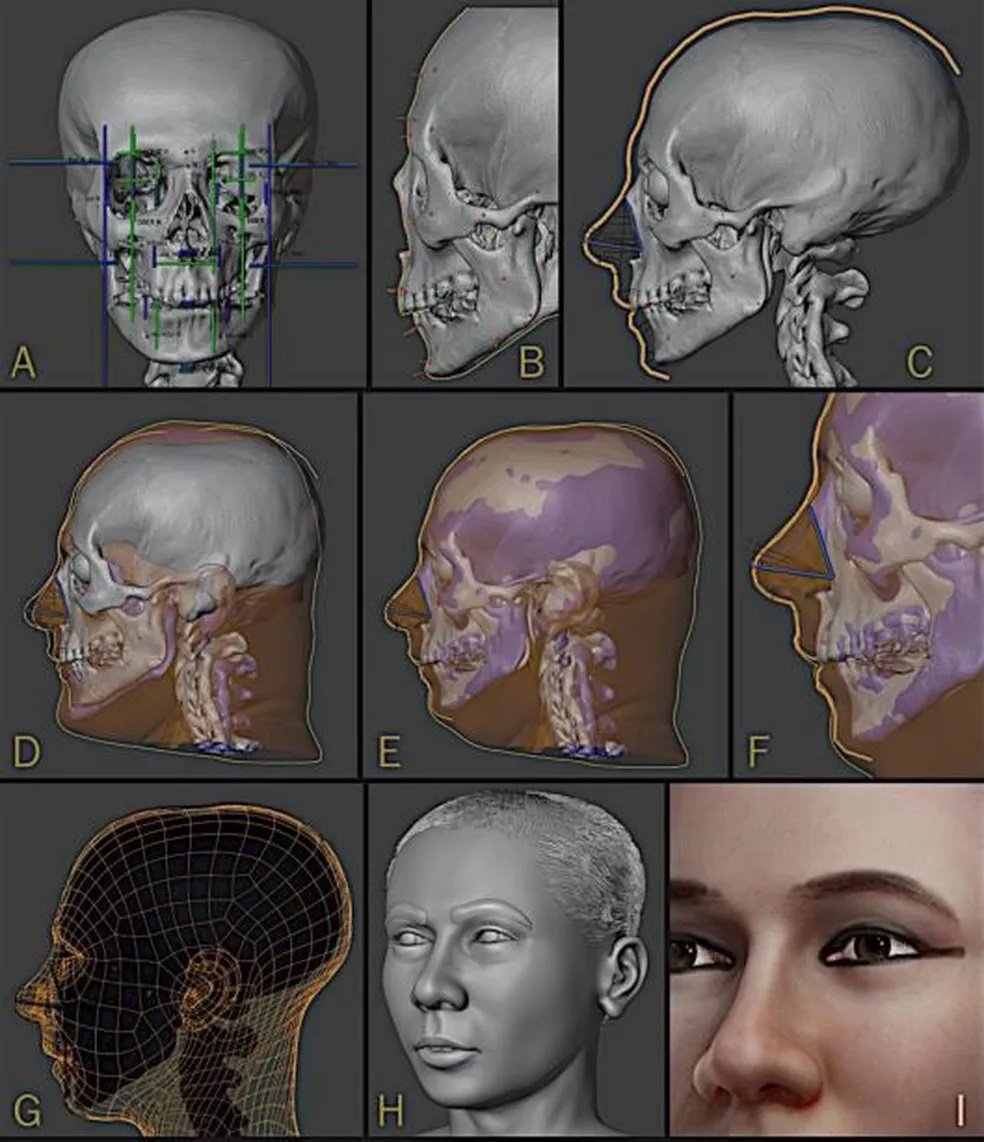
An international team of scientists have reconstructed the face of Egyptian pharaoh Tutankhamun, who was still a teenager when he died more than three thousand years ago.
Tutankhamun c. 1341 BC – c. 1323 BC was the antepenultimate pharaoh of the Eighteenth Dynasty of ancient Egypt. He ascended to the throne around the age of nine and reigned until his death around the age of nineteen.
His features were brought to life by an international team of academics from Brazil, Australia and Italy using a digital model of his mummified skull.
Brazilian graphics expert Cicero Moraes, who co-authored the new study, said: “To me, he looks like a young man with a delicate face.
“Looking at him, we see more of a young student than a politician full of responsibilities, which makes the historical figure even more interesting.”
The famous “boy king” was discovered along with dozens of incredible treasures by British archaeologist Howard Carter in November 1922 in Egypt’s Valley of Kings.
Howard Carter opening the sarcophagus of King Tutankhamun (14th c. BC) in 1924. pic.twitter.com/roCxGzTpzP
— History Defined (@historydefined) May 22, 2023
Recreating the face of Pharaoh Tutankhamun “challenging”
Because the international team did not have direct access to the pharaoh’s skull, completing the new model was especially challenging. Previous studies had already recorded the skull measurements and published reference images.
Moraes said: “It was detective work, where traces of information were concatenated [linked together] in order to provide us with a three-dimensional model of the skull.
“With the proportion data and some important cephalometric measurements, it was possible to take the digital skull of a virtual donor and adjust it so that it became the skull of Tutankhamun.”

From there, Moraes said, they recreated “the size of the lips, the position of the eyeballs, the height of the ears and the front size of the nose.”
“All of these projections are based on statistical studies that were performed on CT scans of living individuals from several different ancestries,” he said.
Markers were then applied to the skull indicating the thickness of soft tissues in various places, using data from modern Egyptians as a guide.
With these and other techniques, the face was gradually rebuilt into an objective reconstruction. Subjective elements like eye color were then added to further humanize the subject.
Tutankhamun was worshipped as a deity during his lifetime
Tutankhamun’s most significant actions during his reign were reversing the societal changes enacted by his predecessor, Akhenaten, during the Amarna Period: Tutankhamun restored the traditional polytheistic form of ancient Egyptian religion, undoing the religious shift known as Atenism, and moved the royal court away from Akhenaten’s capital, Amarna.
Tutankhamun was one of the few kings worshipped as a deity during his lifetime; this was usually done posthumously for most pharaohs.
In popular culture, he is known for the vastly opulent wealth found during the 1922 discovery of his tomb, KV62, the only such tomb to date to have been found in near-intact condition. The discovery of his tomb is widely considered one of the greatest archaeological discoveries of all time.
See all the latest news from Greece and the world at Greekreporter.com. Contact our newsroom to report an update or send your story, photos and videos. Follow GR on Google News and subscribe here to our daily email!



